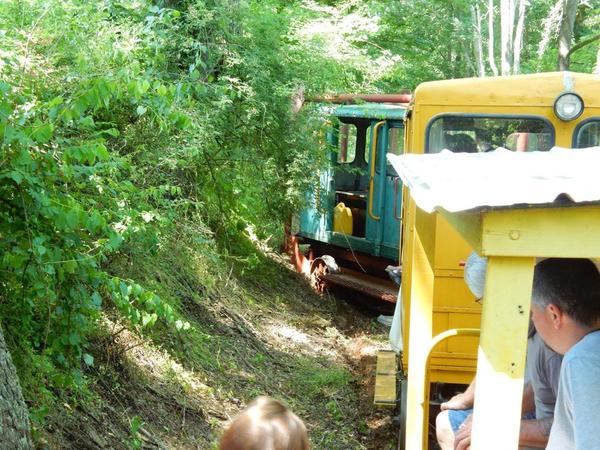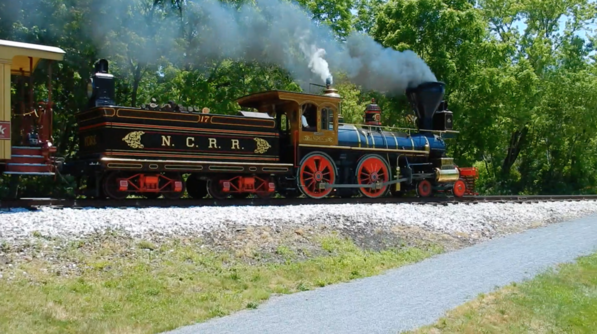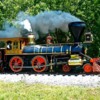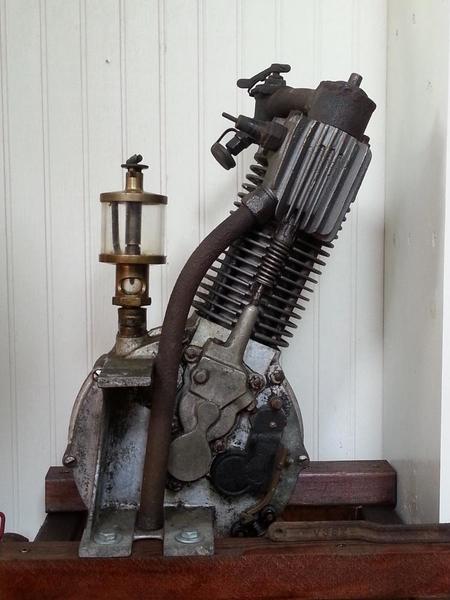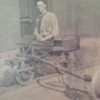Motorcars
"My first experience with track motorcars was in 1913 when I got into the Maintenance-of-way Department. They were just beginning to displace the handcar and three-wheel or velocipede, and they were not very reliable. The car was known as a 2-J. The body of the car was carried above one rail by two wheels and there were two wheels which ran on the other rail and were attached to the car by wooden struts. These cars were easily derailed and they were "iffy" when it came to whether or not they would run. I was not involved in a serious accident with one in more than 100,000 miles of traveling on them. I ascribe this, however, more to good luck than to anything else.
For example, I was on a morning trip east of La Junta and had stopped just west of Caddoa to talk with the section foreman. There was no place to set the car off so I left it sitting on the track. After we had talked a few minutes, he said,"How late is Number 4?" Surprised by the question, I looked at my watch and said,"He's on time, as far as I know. I haven't got anything on him." Then I looked at my watch again, saw the second hand wasn't moving, and raced for the track. I jerked the car off the track, and a few minutes later Number 4 tore by going about seventy-five miles an hour. My watch had stopped after I had left La Junta.
Another time I had put my motorcar on the main track at Vaughn about 7AM and started west. When I got just past the coal chute I saw switchmen out on the main track giving me violent stop signals. I suddenly realized that I had completely forgotten about the morning passenger train, which was overdue and could be expected to come around the blind curve up ahead at any moment at about 60 miles per hour. I managed to get the car in the clear just before the train arrived. After it had passed the switchmen came over and helped me get the car back on the track. If they hadn't stopped me I would have met the train on the blind curve and the company would have been out three hundred dollars for a motorcar and whatever a division engineer was worth at the time.
While trains constituted the chief hazard to motorcar operation, there were many other unpleasant things that could happen. One time the general foreman of bridges and buildings at La Junta was making a motorcar trip over the Arkansas Valley Branch. A short distance north of Swink, he came upon a row of sugar beets thirty or forty feet apart which some boys had placed in the rail. The track being straight, he saw the beets in plenty of time. He slowed down, eased up to the first three or four, and pushed them off the rail with his rail sweep. Concluding there was no use wasting time in this manner he opened the throttle and approached the last beet at about twenty miles per hour. The next thing he knew, he was lying alongside the track wondering what had hit him. The boys had stuck a spike in an open joint behind the last beet!
For a long time after they came into general use, track motorcars consisted simply of a frame, wheels, and engine. There was a rail on both the front and read end of the car to keep the occupant from sliding off, but nothing to protect him from the weather. This wasn't so bad during the summer, except when it rained, but a motorcar trip in freezing weather was something of an ordeal. The best thing to do in such a situation was to put on all the warm clothes you had, then get into a pair of coveralls. This might not keep you warm, but you wouldn't freeze. Eventually someone surreptitiously placed a canvas windshield on the front of his car, and although frowned on and prohibited at first, the practice grew and gradually came to be accepted, so all cars were equipped with this life-saver at the factory.
Nowadays some of them even have side curtains and a top, but in my opinion, this is going too far. Sometimes, in the interest of self-preservation, you might have to unload unexpectedly; under such conditions, it would be a lot better if you didn't have anything between you and open country."
From "From Cab to Caboose-Fifty Years of Railroading" – Noble





